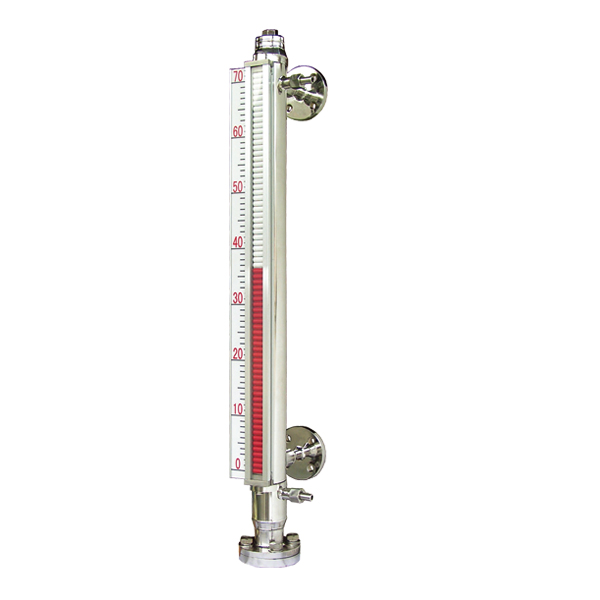Instrument classificationSensor definition: A sensor is a measuring device or device that converts the measured measurement into a certain physical quantity that is convenient for application with a certain degree of accuracy.There are many classification methods for meters, which can be divided into many categories according to different principles:(1) The classification of detection instruments “ ” is divided into: temperature detection instruments, pressure detection instruments, flow detection instruments, level detection instruments, and analysis instruments according to the different detections measured.(2) The classification of display instruments is divided into recording instruments, indicating instruments, analog instruments, and digital display instruments according to the different functions of recording, indicating, analog and digital.(3) During the calibration, maintenance, and installation of automatic control instruments, some instruments are called primary instruments, and some are called secondary instruments.Primary instruments refer to instruments installed on site and directly in contact with the process medium, such as pressure change, temperature change, etc. Thermal resistance and thermocouple are generally not called meters, but temperature sensing elements. In actual applications, we refer to the instruments installed on the site (except for some, such as electric valve positioners) collectively as primary instruments.Secondary instrument refers to the general name of various instruments whose value signal does not directly come from the process medium, and its signal usually comes from the transmission signal of the primary instrument. The secondary instrument is usually installed on the instrument panel in the duty room. Instrument classification is only for the convenience of instrument repair, maintenance, installation and management. How to classify and name it depends on the actual situation.Metrological verificationMetrological verification refers to all the work performed to evaluate the metrological performance of measuring instruments and determine whether they are qualified, including inspection and sealing. It is an important form of value transfer and an important measure to ensure the accuracy and consistency of the value.According to the different management links, the measurement verification can be divided into the following five types: periodic verification, factory verification, post-repair verification, import verification, and arbitration verification.Measuring instruments can be divided into compulsory verification and non-compulsory verification according to the nature of management, and the two are also collectively referred to as measurement legal system verification.Instrument performance indexThe basic performance commonly used in detection instruments includes measurement range and range, basic error, accuracy level, sensitivity, resolution, drift, reliability, and anti-interference performance indicators.(1) Measurement range: refers to the range of the measured variable that the instrument measures according to the specified accuracy.(2) Range: Range = upper limit of measurement-lower limit of measurement.(3) Zero point migration: refers to the change of zero point, and range migration refers to the change of range.(4) Sensitivity: The sensitivity of the instrument to the change of the measured parameter is often used as the ratio of the output change of the instrument to the input that caused the change after sufficient time has elapsed when the measured parameter changes. Sensitivity.(5) Resolution: Also known as the sensitivity limit, it is the minimum input that the meter output can respond to and distinguish, and is a response of sensitivity.(6) Classification of error ① Absolute error: the difference between the displayed value of a measured instrument and the agreed true value. ②Relative error: the percentage of absolute error to the agreed true value. ③ Quotation error: the percentage of absolute error to the full scale of the instrument. ④Maximum reference error: the percentage of the maximum absolute error to the range. ⑤Return error: Under the same conditions, the measured value remains unchanged, and the difference between the positive and negative strokes of the measuring instrument. ⑥Accuracy: It is an important indicator to measure the accuracy of the measurement value of the instrument. It is expressed by removing the “±” and “%” with the maximum reference error, and its sequence is 0.005, 0.02, 0.05, 0.1, 0.2 , 1.0, 1.5, 2.5, etc.The basis of error analysis errors can be divided into systematic errors, random errors and gross errors.(1) Accuracy: The reflection of the system error in the measurement, which characterizes the degree of deviation of the measurement result from the true value.It is generally believed that measurement accuracy is a qualitative concept and should not be quantified. For example, it is not appropriate to say that the accuracy is 0.25%, 16mg, or ±16mg. In actual work, the measurement accuracy can be estimated by the deviation of the measurement result from the agreed true value.(2) Precision: The reflection of random errors in measurement refers to the degree of agreement between independent observations obtained under specified conditions.Other common knowledge(1) Conversion of pressure units:1 bar (bar) = 105 Pa (Pa) 1 dyne/cm2 (dyn/cm2) = 0.1 Pa (Pa) 1 Torr = 133.322 Pa (Pa) 1 millimeter of mercury (mmHg) =133.322 Pa (Pa) 1 millimeter of water column (mmH2O) = 9.80665 Pa (Pa) 1 engineering atmospheric pressure = 98.0665 kPa (kPa) 1 kilopascal (kPa) = 0.145 lbf/in 2 ( psi) = 0.0102 kgf/cm2 (kgf/cm2) = 0.0098 atmospheric pressure (atm) 1 pound force/inch 2 (psi) = 6.895 kilopascals (kPa) = 0.0703 kgf/cm 2(kg/cm2)=0. 0689 bar (bar)=0.068 atmospheric pressure (atm) 1 physical atmospheric pressure (atm)=101.325 kilopascals (kPa)=14.696 pounds/inch 2(psi)=1 .0333 bar (bar) simplified formula: 1MPa≈1bar≈101kPa≈145psi≈10atm≈10kgf/cm2(2) Standard state: The volume of gas changes with temperature and pressure. Therefore, when measuring the volume flow of natural gas, a certain temperature and pressure must be designated as the standard temperature and pressure for measurement, which is called “reference state” and ” Standard state”, my country’s SY104-83 (Natural Gas Flow and Standard Orifice Plate Measurement Method) stipulates: 20 ℃, 1 standard atmospheric pressure (101.325KPa) as the standard state of natural gas measurement in my country.
Post time: 21-09-21
